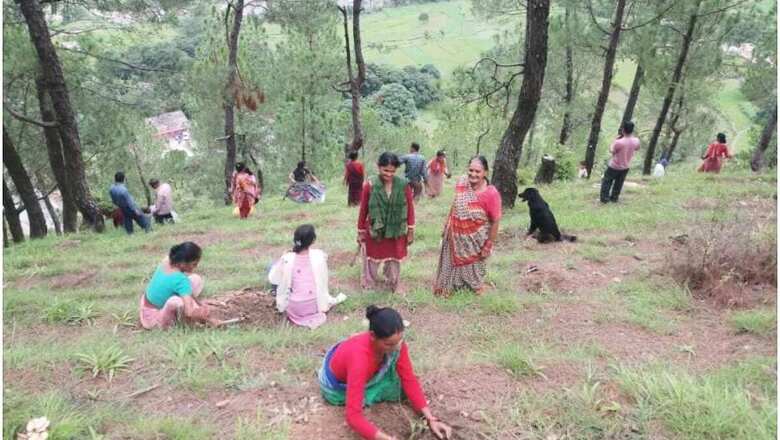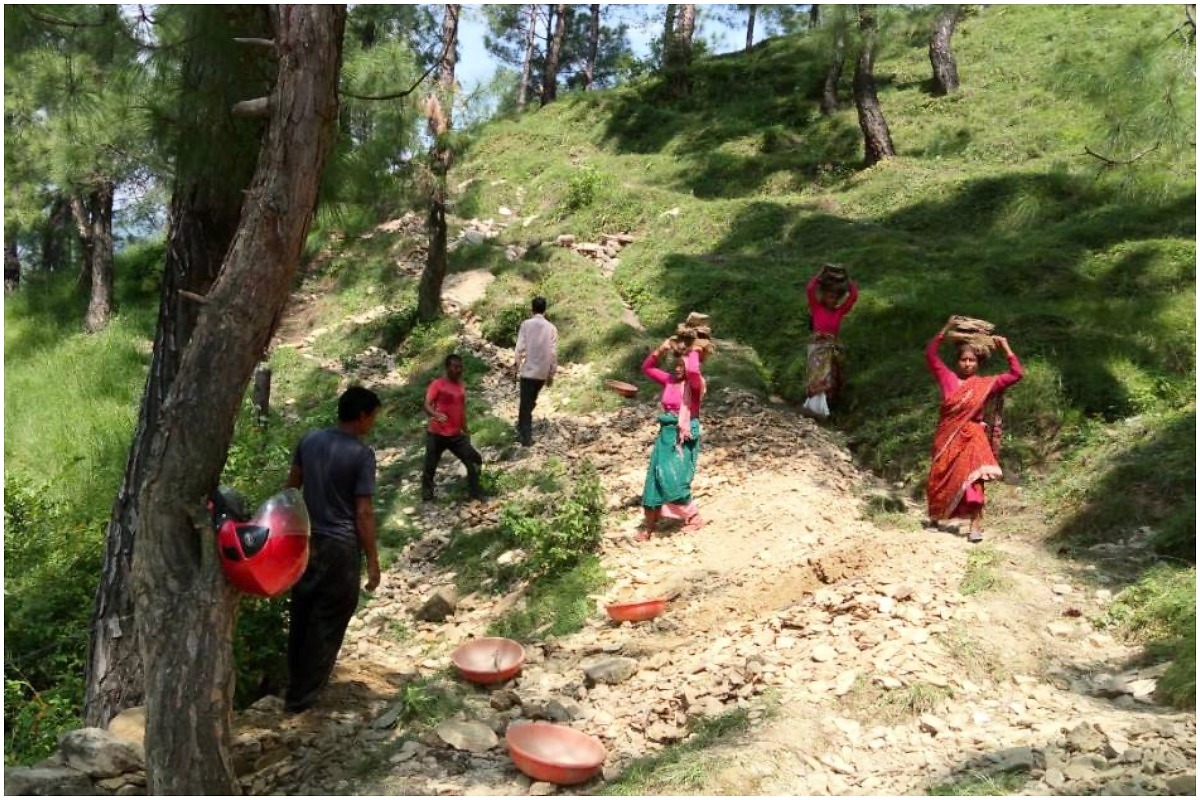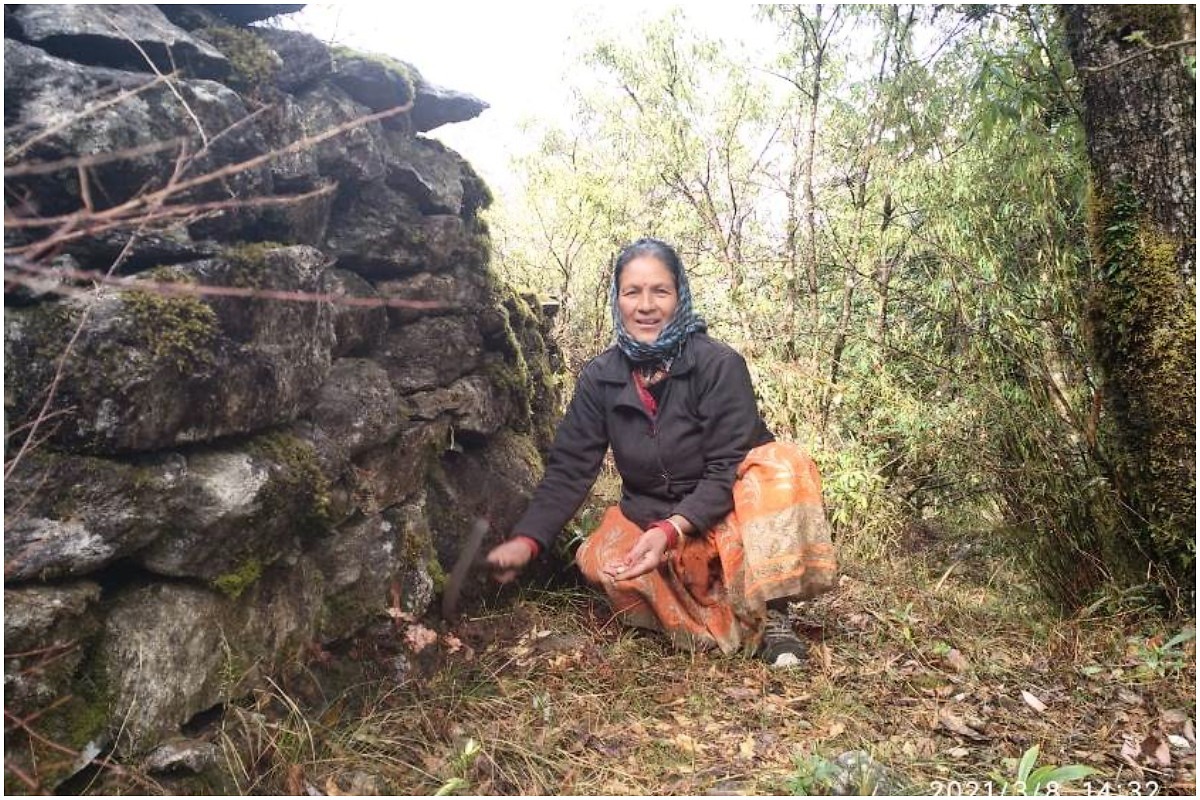
views
Dehradun, Uttarakhand: “The forests are very useful for the people living in the mountains. These forests cater to their basic needs such as clean water, pure air, cooking fuel, farming, fodder etc. Wherever the forests are meeting the basic needs of the people, the forests are healthy,” says Mallika Virdi. She is the sarpanch of the Van Panchayat of Sarmoli village in Uttarakhand’s Pithoragarh district. And her Van Panchayat is counted among the finest in the mountain state.
Van Panchayat refers to a locally-elected institution that plans and organises activities to manage community forests in a sustainable manner.
In Virdi’s village, for instance, the community members clear bushes, remove weeds and prune dry branches to “get good-quality grass”. “If we leave the forest [unattended], then the shrubs will grow as tall as trees. The management of forests is, therefore, necessary,” she explains.

Out of the total area of 51,125 sq km in Uttarakhand, about 71.05% of the land is covered in forests. Of this, 13.41% forest area comes under the management of the Van Panchayats and there are 12,167 of these all over the state, the 2020-21 Uttarakhand Economic Survey says.
Community knows best
The Van Panchayats of Uttarakhand are known for managing community forests efficiently. Each Van Panchayat makes its own rules to use, manage and protect the local forest. These rules range from selecting forest guards to penalising defaulters. In Virdi’s village of Sarmoli, the penalty fee can go from Rs 50 to Rs 1,000.
“Van Panchayats do all the work related to environmental protection such as the revival of water sources, water conservation, protection of forests from fires, and plantation,” says Puran Singh Rawal, who is the sarpanch of Adauli Van Panchayat in Bageshwar district.
Rawal gives an insight into how his people fight forest fires. One, they routinely collect the fallen leaves and dried bushes and keep them aside. This is to ensure that the fire doesn’t spread from the ground up. Two, they have identified the water sources they can rush to, in case there’s a fire.

Van Panchayats mostly operate independently of each other, but instances of collaboration are not uncommon. Take the case of Sarmoli. Since the villagers don’t get enough grass from their own forest during the winter, they visit the forest in the adjacent village of Shankhadhura to meet their needs. On certain terms & conditions though. One, Shankhadhura Van Panchayat opens up its forest to outsiders only when it has a surplus of grass. Two, the outsiders have to buy a pass for Rs 150 from Shankhadhura Van Panchayat to enter their forest. Three, only one person per household is given entry.
These Van Panchayats also ensure that the forest resources aren’t overused. All movement of villagers and their cattle in the monsoon — from June to September — is stopped. During this period, people arrange grass and fodder for their cattle from within the village itself. Some villagers are also deployed to patrol the forest and to catch intruders.
Virdi explains why this is done, “[As a result of the ban on forest use] a good amount of grass grows in the forests by October and November. The Van Panchayat then distributes the grass to the villagers as per their requirement. This grass is used as fodder all through the winter season.”
Fight to stay free
The Van Panchayats won their right to manage traditionally-held forests after a sustained campaign against colonial rule. Tarun Joshi, president of the Van Panchayat Sangharsh Morcha, says that the British had declared these forests as the property of the state and banned the movement of people into the forest. The people of Uttarakhand (then a part of the United Provinces) opposed the move, the British authorities were forced to form the Forest Grievances Committee to address their concerns. It was on the advice of this committee that the institution of Van Panchayat was created under Section 28 (2) of the Indian Forest Act, in 1927.

The working of Van Panchayats was disrupted in the year 1997 when the Indian government introduced the concept of Joint Forest Management or JFM. This model required both the forest departments and local communities to work together to manage and protect forests. It was met with protests by Van Panchayats across Uttarakhand, as they were opposed to the idea of the forest department ‘meddling’ in their affairs. The Forest department officials were given economic and administrative rights in the Van Panchayats, which the Panchayats did not approve of.
As a result, the JFM system was discontinued from the state in 2003 and the Van Panchayat rules were reinstated, informs Joshi. However, the Van Panchayats are still not completely free of either the forest department or the revenue department. The sarpanches complain of increasing interference by the forest officials. Retired officials from the forest department are being inducted into the Van Panchayats against the wishes of the locals.
The revenue department is responsible for conducting elections for a Van Panchayat every five years. They also step in to resolve disputes related to encroachments.
On the part of the forest department, they assign a guard for every community forest managed by the Van Panchayat. They also sanction budgets for the Van Panchayats to execute various projects like the Compensatory Afforestation Fund Management and Planning (CAMPA) scheme, or the Japan Interactive Corporation Agency (JICA) funded scheme. These may include afforestation, forest protection, water conservation and soil rejuvenation.

“We are working to increase the livelihood sources of these Van Panchayats through projects such as JICA. So far, 700 Van Panchayats are executing projects under JICA,” says Neena Grewal, who is the chief conservator of forests under the forest panchayat and community forestry department.
A budget of Rs 5,000 to Rs 10,000 is issued to the Van Panchayats for a period of three to four months, informs Rawal. According to the Forest Department Rules 2012, the department is supposed to draft a ‘micro-plan’ for the Van Panchayats every five years and sanction the budget for the same. However, a majority of the Van Panchayats haven’t yet received the funds to execute these projects, which they wanted to take up to supplement their income.
The Van Panchayats’ own sources of income stem from the money they make by auctioning the pine, grass or rhododendron gathered from the forests, or from the sale of juices, jams, pickles and other processed products made by self-help groups.
However, they have to seek permission from the forest department to use this income, even if it is for smaller interventions such as making a pond. Such interference remains a sore point in the otherwise efficient model of the Van Panchayat in Uttarakhand, say these leaders.
(The author is a Dehradun-based freelance journalist and a member of 101Reporters.com, a pan-India network of grassroots reporters.)
Read all the Latest News, Breaking News and Coronavirus News here. Follow us on Facebook, Twitter and Telegram.



















Comments
0 comment